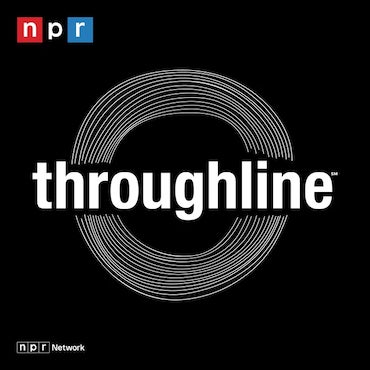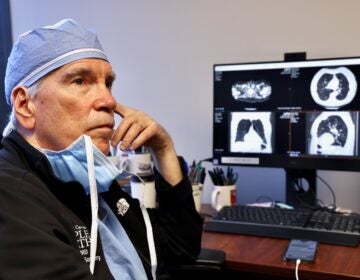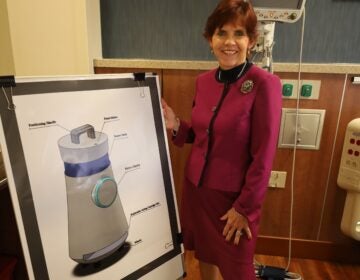Houston, we have a people problem: the first ‘mutiny’ in space
Listen 8:06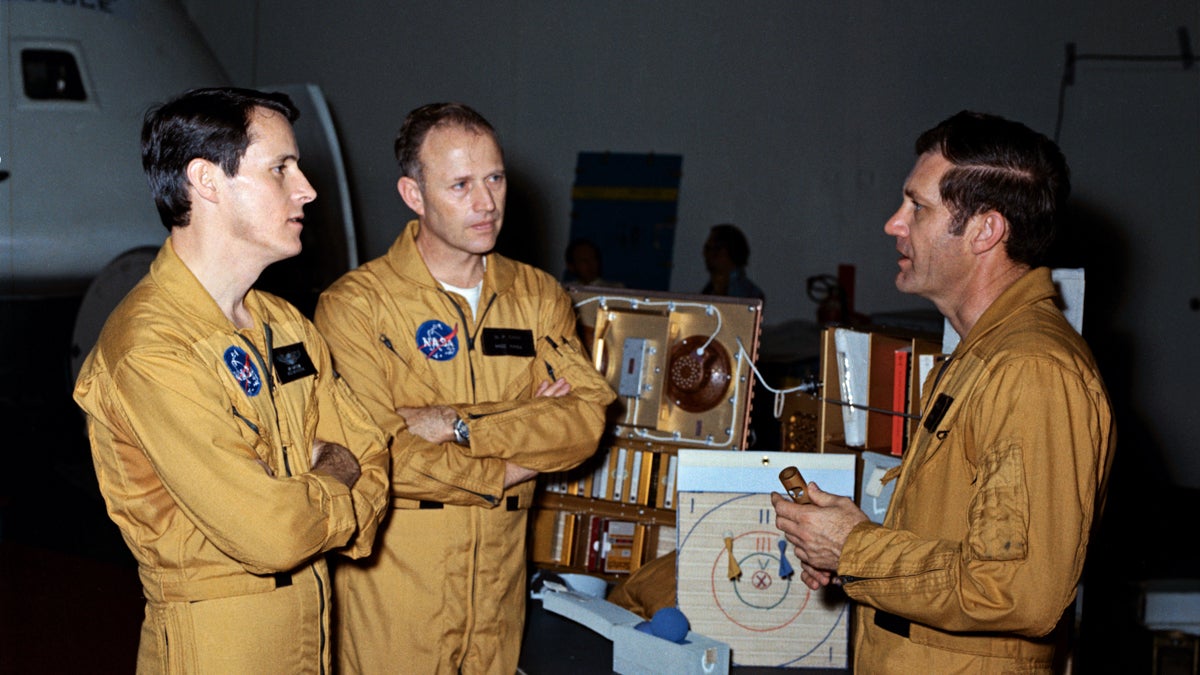 These three men make up the crew of the Skylab 4 mission. They are, left to right, scientist-astronaut Edward G. Gibson, science pilot; astronaut Gerald P. Carr, commander; and astronaut William R. Pogue, pilot. (Photo via NASA)" title="mutiny" width="1" height="1"/>
These three men make up the crew of the Skylab 4 mission. They are, left to right, scientist-astronaut Edward G. Gibson, science pilot; astronaut Gerald P. Carr, commander; and astronaut William R. Pogue, pilot. (Photo via NASA)" title="mutiny" width="1" height="1"/>
Photo via NASA)"> These three men make up the crew of the Skylab 4 mission. They are, left to right, scientist-astronaut Edward G. Gibson, science pilot; astronaut Gerald P. Carr, commander; and astronaut William R. Pogue, pilot. (Photo via NASA)
In 1973, a communication snafu between astronauts in space and their colleagues on Earth, alerted NASA to the need for people skills and sensitivity training.
People have lived and worked continuously in space for almost 17 years. The technology and ingenuity it takes to pull that off is amazing, but the cooperative human spirit it requires must be pretty incredible too.
Think about it: You’re an astronaut, one of the most highly-trained people on the planet, and you’ve been looking forward to the majesty and romance of the moment for years. Then, suddenly, you’re dealing with cramped spaces and your co-workers are your roommates; plus your bosses back at mission control on Earth are issuing demands and watching your every move.
Imagine the missed signals, and communication snafus that are possible. For decades, NASA has been studying the human factor in space in much the same way researchers study physics and engineering.
And NASA is still learning from one historic moment when things went didn’t work as planned. It was 1973, and three astronauts were rocketing to nearly 300 miles above the surface of the Earth.
Mission captain Jerry Carr says his Skylab 4 crew had trained for several years, but the trouble started right then on takeoff.
“A lot of guys had described that ride as riding on a train with square wheels,” Carr says.
Carr, who’s now 84 and lives in Vermont, says sure, they were expecting a bumpy ride, but it was so bad that Bill Pogue, a crew member and stunt pilot whose nickname ironically was “Iron Belly,” threw up.
“We looked at him and said ‘Good lord, this guy is a former Thunderbird, he could do acrobatics in an airplane that would make the rest of us sick,'” Carr says.
Carr says, at the time, folks at the Johnson Space Center in Houston were all uptight about a new thing called “space sickness syndrome” — a kind of motion sickness astronauts sometimes get in zero gravity.
“So we decided that we would just not tell anybody about it,” he says.
They wanted to downplay the problem, because they were worried doctors on the ground would overreact, and it would become a whole thing. They talked about concealing the evidence, maybe even throwing the sick bag out of an airlock.
“That was a dumb thing to do because we had left our intercom system running,” Carr says.
The jig was up — mission control was hip to their plan.
“It put us on the defensive right off the bat,” he says.
They got on a conference call and the big boss in Houston gave them an earful, but things cooled off soon after. They settled in for their 84-day stay aboard Skylab, a four-room capsule about the size of a small bungalow.
Despite being in space, life was mostly normal. The astronauts slipped into their daily routine of scientific experiments, cleaning, and making repairs. But there was a lot to do, and a lot of pressure to get it done. The crew quickly fell behind. Carr says their schedule was jam-packed from 6 a.m. until about 10 at night.
“That made a pretty long workday out of it,” Carr says.
On top of that, he says the astronauts were not happy with how they were being scheduled.
“Sometimes they’d send up a schedule where one of us had to exercise after a meal, which is not how you’d do it on earth,” he says. ” So we were beginning to grouse about that.”
Eventually, they were so far behind schedule they were giving up days off to make up for it.
“We lasted on that for about 40 days or so,” he says. “Then we’d pretty much had it.”
What happens next depends on who you ask. Carr, the mission captain, says the crew wasn’t paying attention and missed a chance to check in with mission control during a flyover. But other takes on the situation suggest the astronauts took an intentional break, maybe giving themselves a timeout from the stress and what felt like micromanagement.
It was “what has been called by some people as ‘the mutiny,'” Carr says.
Either way, there was some unexpected silence for a while, then both sides acknowledged there was a problem, and about halfway through the mission, they all convened to share feelings.
“That’s when we had our, what I call, a sensitivity session in space,” Carr says.
They went back and forth. Houston didn’t understand why deadlines were being missed and why the astronauts were griping about schedules — the Skylab program cost millions of dollars per day and the whole world was watching. Up in space, Carr and the others felt like they were being held to an almost impossible standard, they had no time to do basic things.
“We had an antagonistic attitude there for some time before we got it off our chests, they got it off their chests and we went ahead and looked for a way to solve the problems,” he says.
They compromised — mission control would be more affirming about telling the guys up there when they did a good job, and the crew would have more time to workout and wash up.
They’d also plan for one uninterrupted hour to unwind before bed each night. Both sides admitted some fault, Carr says talking about feelings in space was a new thing back then.
“We had none of that kind of training, and no exposure whatsoever to it, we were just playing it by ear,” he says. “Sometimes we didn’t do too well with it, either.”
In the end, the Skylab 4 crew got their day off. Carr says the crew used that time to read, stargaze, and take pictures. But his favorite thing to do was listen to music on a walkman while taking in the view of Earth. Country music singer Jerry Reed was a favorite.
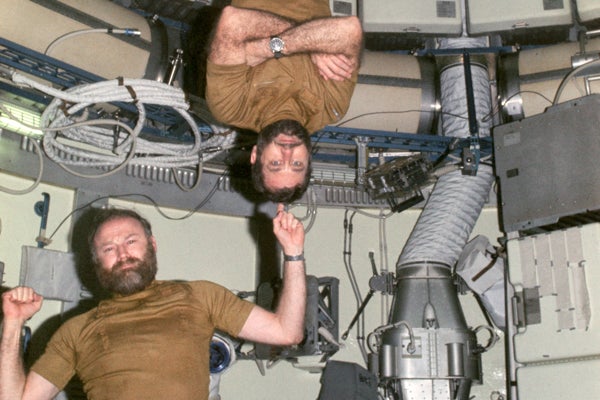
The Skylab 4 communications mishap alerted NASA to a kind of problem it hadn’t really run into before: Astronauts living in space full time is very different from short missions in orbit.
In the years since, to try to get a better picture of what it’s like to be up there on the space station for months on end, NASA had astronauts keep a journal.
Some of the journals read like frustrated diary entries:
“If each activity runs five minutes over, you can be 30-60 minutes in the hole before lunch,” one astronaut wrote. “Sunday is supposed to be a day of rest, but somehow Houston managed to make it feel like Monday,” another wrote.
NASA has used insights like these to monitor the astronauts’ state of mind during long duration stays in space, and to prevent future communication breakdowns.
Al Holland’s job is to better understand astronauts’ thoughts and feelings.
“Clearly we are humans wherever we are, whether we go out into space or we’re on Mars or we’re on the moon or we’re next door,” says Holland, a NASA senior psychologist at the Johnson Space Center in Houston.
He says accounting for our basic nature is key for successful missions beyond Earth’s orbit, and because the next place we want to go — Mars — is so far away, human training and prep is more important than ever.
“It’s going to be a radically different way of doing business,” Holland says.
The trip to Mars will be the longest-duration space flight so far. Astronauts will travel for more than a year round trip, plus whatever time they spend on the surface. And once they’re there, they’ll be so far from home that messages could take up to 20 minutes to send and receive.
That communication delay is called “comm lag.”
“It’s going to lead, I think, to not only more pressure on the crew to be independent and to work independently but there’s gonna be no opportunity for just natural conversation, or for real time video conferencing with your family,” Holland says.
It’ll be the first time in the history of space travel that astronauts and home can’t be in touch instantly. Holland says that can lead to disconnectedness with family, and tension and conflict on the job, kind of like what happened with the Skylab 4 crew in 1973.
“There will be a lot more strain on the understanding between the different camps because you know when you have less information you have more room for speculation and misinterpretation and that is risk of a we-they dynamic beginning to increase,” he says.
Researchers at NASA are working on some high-tech solutions to reduce comm lag using radios and lasers, but the reality of that delay isn’t going away. Holland says in light of that, NASA is focusing a lot of effort on training astronauts for long-duration stays in isolation, problem-solving in comm lagged conditions, and ways to keep a level head.
He says members of the first group to go to Mars may already be among a pool of selected astronauts, and on top of planning for their first steps on the red planet, they’ll also be working on their people skills.
WHYY is your source for fact-based, in-depth journalism and information. As a nonprofit organization, we rely on financial support from readers like you. Please give today.

